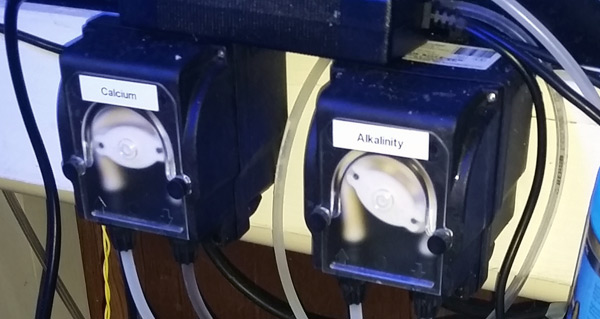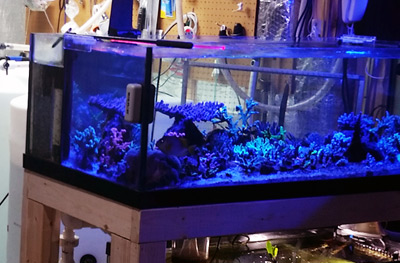In Part 2 of this series, I discussed some of the possibilities for automating your reef system based on your needs. Now that you have a few ideas of what you can automate, I’d like to offer a simple recipe and combination to help take care of your system when you’re away for a short period, ranging from just a weekend getaway to a full week.
Some of the chores you can automate easily and economically include:
1. Feeding
Your fish need to eat a little daily, especially if your tank is pristinely clean and offers no other food sources. Depending on the dietary requirements of your tank inhabitants, a good-quality pellet food may be worth using. Sinking pellet food is the best choice since it won’t float directly into the overflow drain.
There are many battery-operated automatic feeders on the market, but I highly suggest you choose one that offers ample volume and multiple feed settings and is designed to aerate the food to keep it dry.
Unfortunately, an automatic feeder is not an option for carnivorous fish that require frozen foods or those that need to be target fed.
2. Lighting (for corals)
Lighting can be automated very easily by using a simple, inexpensive outlet timer (available in the electrical department of any hardware or home-improvement store) that you program to turn on and off at the desired times.
3. Freshwater top-off
A simple float valve in the sump with a five-gallon container of purified water set higher above for gravity feeding is a great solution for replenishing evaporated water. Keep in mind that when the water evaporates, the salt and other elements remain in the tank and concentrate to raise the salinity over time. The key is to minimize this change to keep the salinity stable.
Reminder: It’s best to use RO/DI water with a total dissolved solids (TDS) reading of 0 ppm to avoid introducing algae-feeding phosphates and silicates to your system.

4. Simple calcium and alkalinity supplementation (for stony corals and proper pH)
If you are keeping stony corals, then a simple kalkwasser mixture in the water top-off can help maintain it. But before attempting this method, you must first estimate the amount of water that evaporates each day and determine the system’s daily calcium and alkalinity demand via some basic testing. This will impact the concentration you will need to mix to avoid overdosing.
Bring in an assistant
If the above solutions aren’t feasible for some reason, the only option is to train someone to take care of your system. Possibilities include:
- Hire an LFS—Can be costly and results may vary. Personally I’ve had two poor experiences with this option.
- Train someone specifically—Can be time-consuming, and it may be difficult to identify a fellow hobbyist with the proper understanding.
- Prepare simple and straightforward documentation for every action required based on how long you’ll be away. You can then laminate these notes and place them near your system for quick reference. This may increase your field of nominees for the task.
Summary of Part 3
As I’ve mentioned, most of this is not new to long-time hobbyists, but it may be very worthwhile information for beginners looking for easy, inexpensive ways to automate critical tasks before they go away on a trip.
In my next installment of this series, I will outline how I have enabled myself to be away from “My Precious” for weeks at a time.
Read the other installments in this series:



